No Galaxy Will Ever Truly Disappear, Even In A Universe With Dark Energy
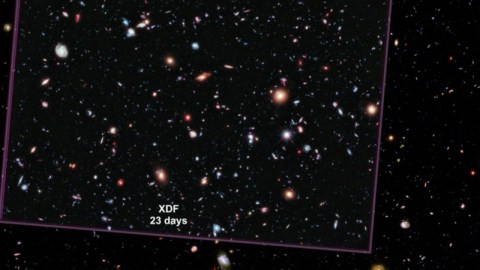
As time goes on, every galaxy beyond our local group will speed away from us faster and faster. And yet, more will keep appearing.
The farther away a galaxy is from us in this expanding Universe, the faster it appears to recede away from us. As time goes on, each one of those individual galaxies will both move progressively farther away and appear to speed away at ever-increasing velocities. To put it simply, the Universe isn’t just expanding, but the expansion is accelerating over time. Over the past two decades, it’s become abundantly clear that a new form of energy — dark energy — is not only driving this accelerated expansion, but is the dominant form of energy in our Universe.
And yet, despite all of this, there are more galaxies that we can observe today, 13.8 billion years after the hot Big Bang, than at any prior point in our cosmic history. Even more puzzling: as time goes on, the number of potentially observable galaxies will increase, more than doubling as the cosmological clock continues ticking by. Even as they recede faster and faster, not a single galaxy will ever disappear from our view entirely. Here’s the puzzling science of how this happens.
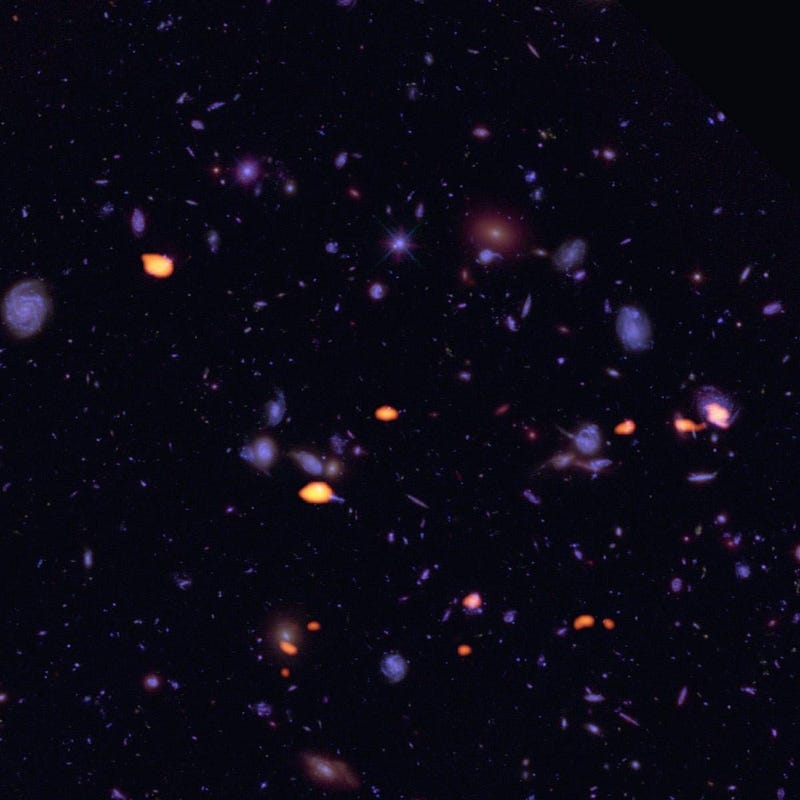
The Universe, ever since the first moments of the hot Big Bang, has been engaged in a tremendous cosmic race. On one hand, you have the initial expansion rate: rapidly driving any two separated points in space apart over time. On the other hand is the incredible force of gravitation, attracting all forms of matter and energy towards one another and competing against the initial expansion. You can imagine, based on this setup, three possible outcomes.
- The initial expansion is too great for the matter-and-energy we have, and the Universe keeps expanding forever.
- There’s too much matter-and-energy for the initial expansion rate, and the Universe expands to a maximum size and then contracts, eventually collapsing in a Big Crunch.
- Or the Universe exists right on the border between those two scenarios, where the expansion rate asymptotes to zero but never quite recollapses.
For generations, we sought to measure which of these possibilities matched our Universe. When the observations finally came in, they shocked us all.
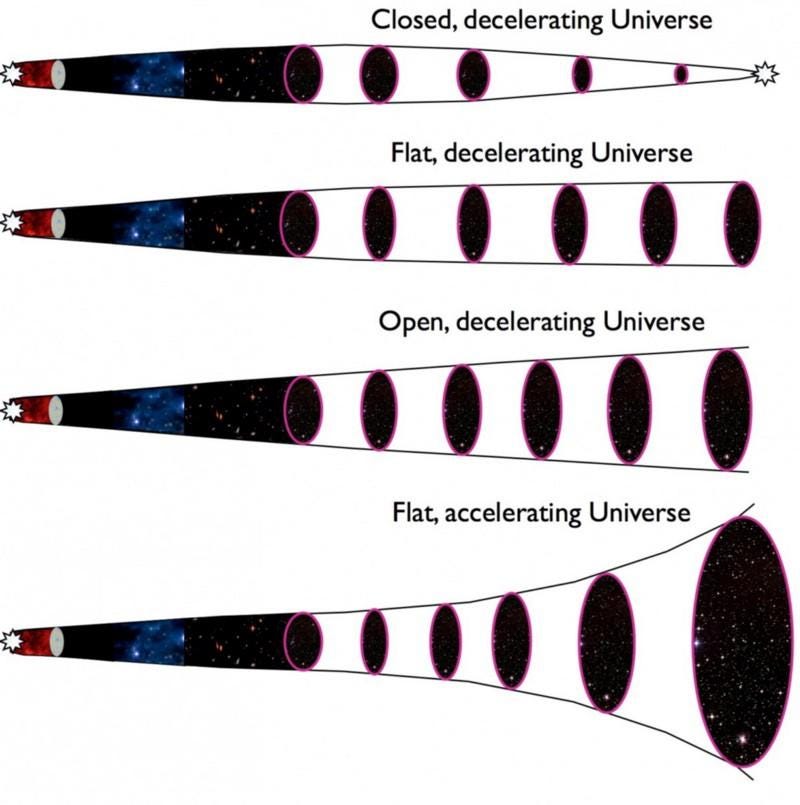
Instead of any of these three scenarios, though, the Universe does something different. For the first few billion years, it appears that the expansion rate and the matter-and-energy density balance almost perfectly, as the expansion rate drops and drops while the density drops as well, headed towards that state where the expansion rate asymptotes to zero.
Distant galaxies appear to recede from us slower and slower, even as they reach greater and greater distances. And as the expansion rate drops, ultra-distant galaxies — galaxies whose light has been streaming towards us for billions of years — starts to catch up to us, eventually revealing their existence to our eyes.
And then, about 6 billion years ago, these ultra-distant galaxies suddenly appear to move away from us at a faster, accelerating rate. All of a sudden, dark energy’s presence is revealed.
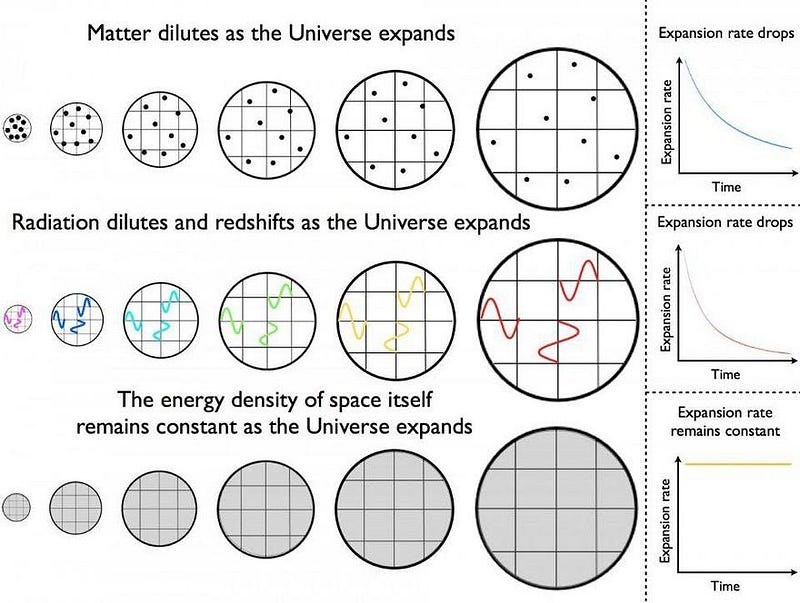
The reason why is simple enough. As the Universe expands, its volume increases, but the number of particles within it remains the same. As time goes on, the matter density drops in proportion to the scale of the Universe cubed: the separation distance between any two point to the third power. Radiation drops even more severely (to the fourth power), since the number of particles not only dilutes, but the expanding Universe stretches that radiation’s wavelength as well.
But if there’s a non-zero amount of energy inherent to space itself, then the energy density doesn’t drop, even as the Universe expands. Instead, the dark energy density remains constant, which means that as the matter and radiation density drop by great enough amounts, dark energy becomes more important. By the present day, 13.8 billion years after the Big Bang, it’s become the dominant form of energy in the Universe.
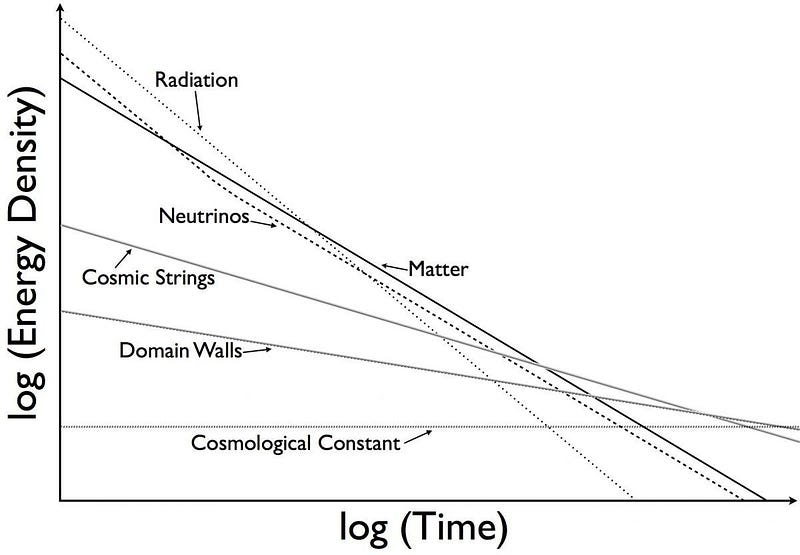
What does this mean for the expansion of the Universe?
A number of important things that aren’t all intuitive, but turn out to be true when you apply the math of the expanding Universe to the physical cosmos that we observe. Here are some highlights.
- The Universe, today, extends for 46.1 billion light-years in all direction, meaning that light emitted at the instant of the Big Bang would arrive at us, today, and its point-of-origin is now 46.1 billion light-years from us in the expanding Universe.
- Any object beyond a certain distance speeds away from us so rapidly that even if we left today in an imaginary ship that traveled at the speed of light, we’d be unable to reach it.
- That distance, when you do the math of how the Universe expands, means that about 94% of all the galaxies contained within the observable Universe are already unreachable, no matter what we do.
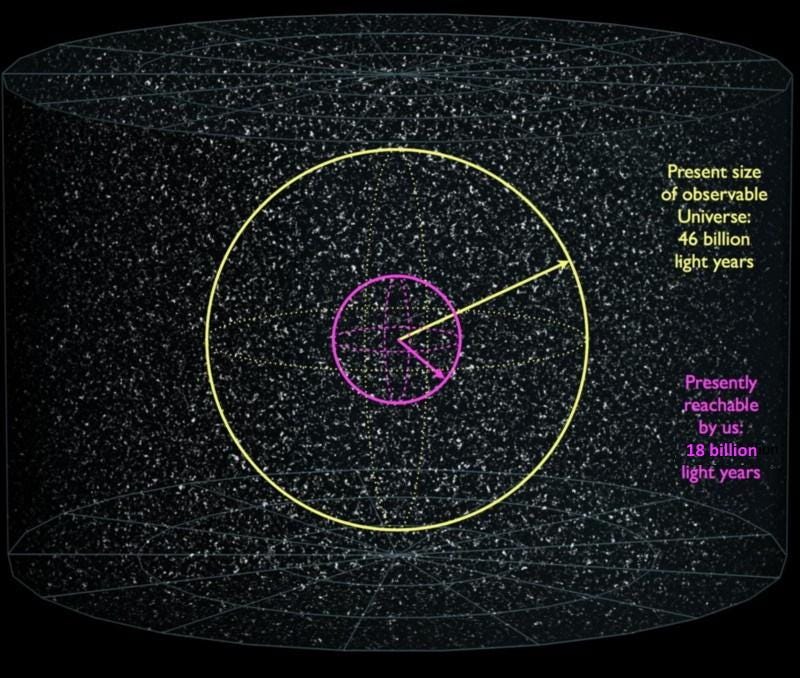
That sure makes it seem like the Universe is disappearing, doesn’t it? As time goes on, individual galaxies that are bound together in clusters and groups — like we’re bound to Andromeda, Triangulum, and about 60 other, smaller galaxies — will remain bound in those individual clumps, but that separate, independent clumps will all recede away from one another, faster and faster, as the Universe evolves. In another 100 billion years or so, we won’t be able to reach a single galaxy beyond our Local Group at all.
And yet, the number of galaxies that we’re able to see, today, is the greatest its ever been, and that number will only continue to increase as time goes on. The reason for that is counterintuitive, unless you’ve worked with General Relativity in the context of the expanding Universe for a long time. As light propagates through the Universe, even as the Universe expands with time, light that was emitted from farther and farther away eventually catches up.
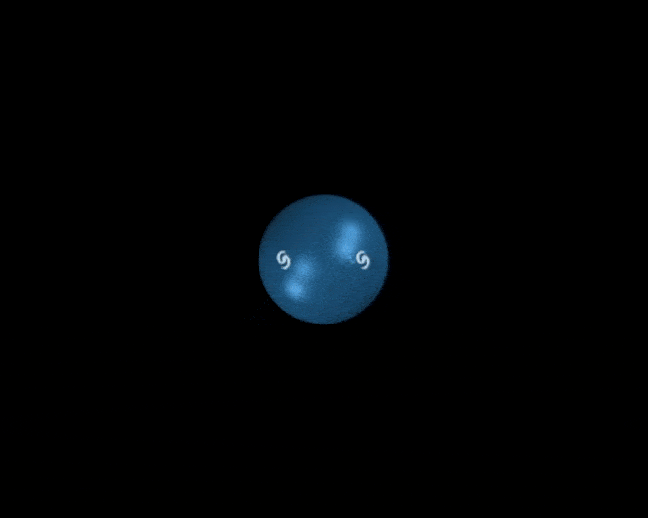
Today, the light that’s arriving after a journey of 13.8 billion years has the following properties.
- When that light was emitted a long time ago, the Universe was much smaller and that distant object that emitted that light was much, much closer to us than even 13.8 billion light-years.
- As the Universe has expanded over its history, the light propagated through the expanding Universe, traveling a total of 13.8 billion light-years if it traveled at the speed of light for 13.8 billion years.
- And today, if we put down an imaginary dot on the coordinate where that light was emitted from, it would now be 46.1 billion light-years away.
Imagine that we asked this question: how many galaxies are presently visible to us, if we had an arbitrarily large, powerful, dust-penetrating telescope? For the first time, we can answer that, through a combination of observations and the cosmological theory of structure formation: 2 trillion galaxies are contained within our observable Universe.
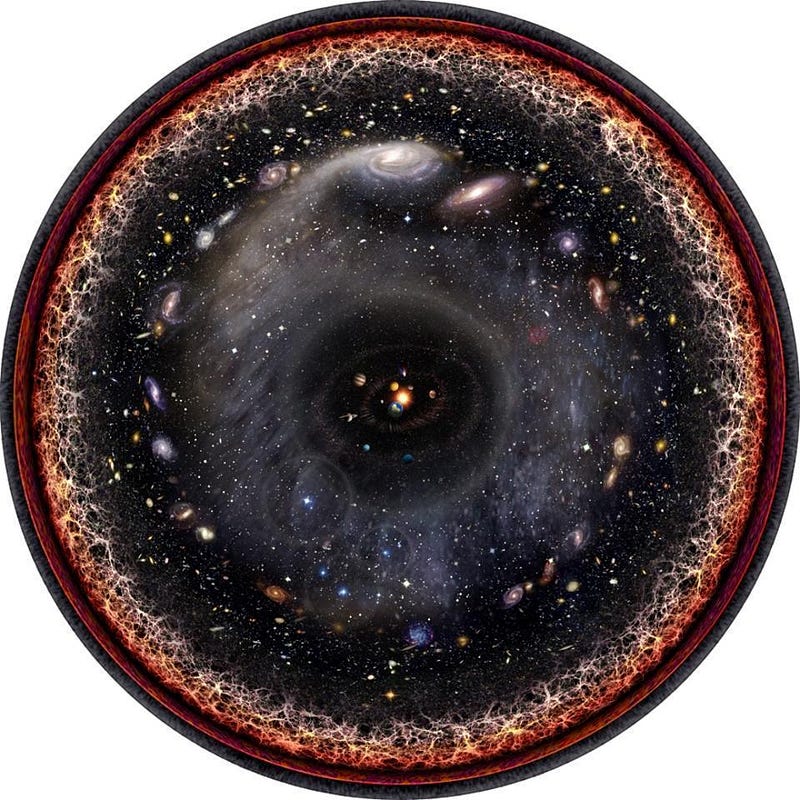
And yet, what will happen to the number of galaxies we can potentially view, ever, as time goes on? Will we see more galaxies? Fewer galaxies? Or the same number of galaxies?
To answer that, we need to understand how light travels through the expanding Universe. Even as the Universe’s expansion accelerates, and distant galaxies appear to recede from us faster and faster as time goes on, the cosmic horizon always increases in size. Ever since the Big Bang first occurred, light from greater and greater distances away has arrived at any given point in the Universe. Today, we can see light that’s been traveling for 13.8 billion years (or less) in the Universe, leading us to a cosmic horizon that’s 46.1 billion light-years away.
But as time goes on, we’ll be able to see light that requires longer periods of time to see: 13.9 billion, 15 billion, or even 100 billion years to arrive. As time goes on, galaxies that are currently invisible to us today will someday appear.
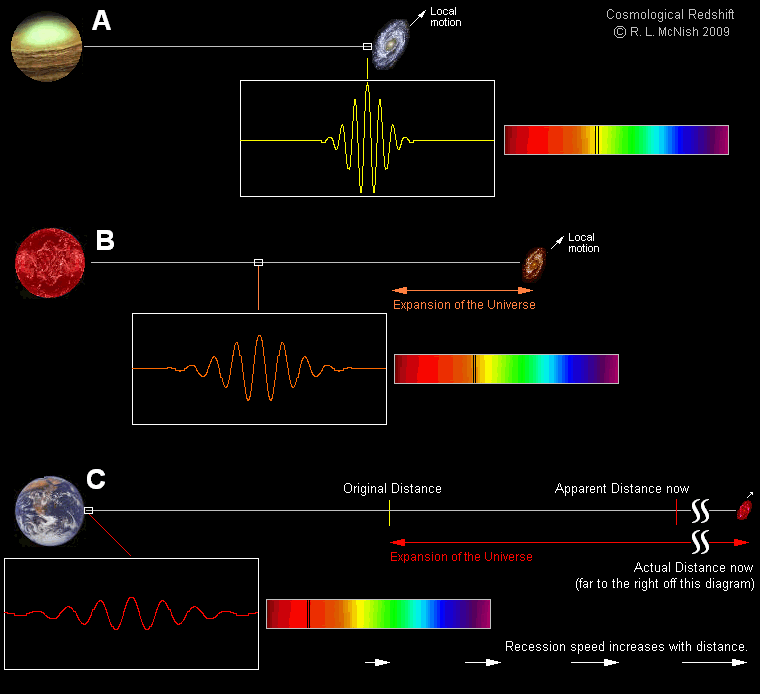
Because we understand how dark energy drives the expansion of the Universe — we know what the Universe is made of and how the expansion history will evolve with time — we can calculate how much the the Universe will ever become observable to us. Today, it corresponds to any object within 61.3 billion light-years of us: about 33% farther than we can presently see. As the history of the Universe continues to unfold, and we allow time to proceed infinitely far into the future, all of the galaxies that are out there, presently beyond our visible horizon, will eventually reveal themselves to us.
In terms of volume, this corresponds to an extra 135% of the Universe, over and above what we can presently observe. If we have a total of 2 trillion galaxies visible to us today, then in the far distant future, if we’re good enough at collecting light from these ultra-distant, ultra-faint objects, we’ll have a total of 4.7 trillion galaxies to study: more than twice as many as we have today.
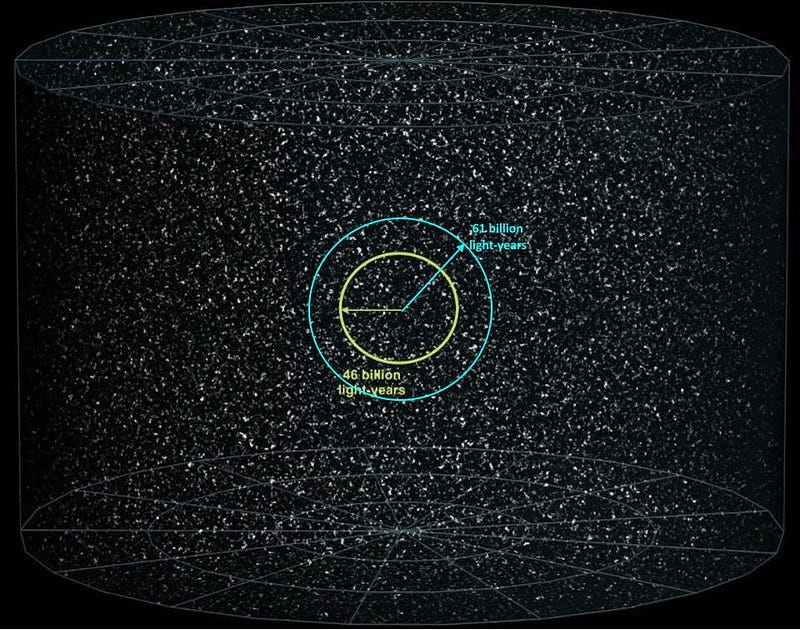
Today, at present, there are approximately 2 trillion galaxies contained within our observable Universe. Only about 6% of them are reachable by us, meaning that the other 94% will always appear as they were in the past; we’ll never see them as they exist 13.8 billion years after the Big Bang, as that light will never reach us. But as time goes on, even more galaxies will be revealed, even though we’ll only ever see them in their cosmic infancy, bringing the total number of observable galaxies to around 4.7 trillion: more than double the number today.
All of these galaxies were once extremely close to us, and their light will eventually arrive at our eyes even as the Universe expands forever and ever. There is a limit to what we’ll someday be able to see, but we haven’t reached it yet. Moreover, nothing will truly disappear; the photons will just arrive more infrequently and with less energy. If we know what we’re looking for, those, the far-future Universe will not only remain observable, but we’ll be able to see more of it than ever before.
Ethan Siegel is the author of Beyond the Galaxy and Treknology. You can pre-order his third book, currently in development: the Encyclopaedia Cosmologica.





